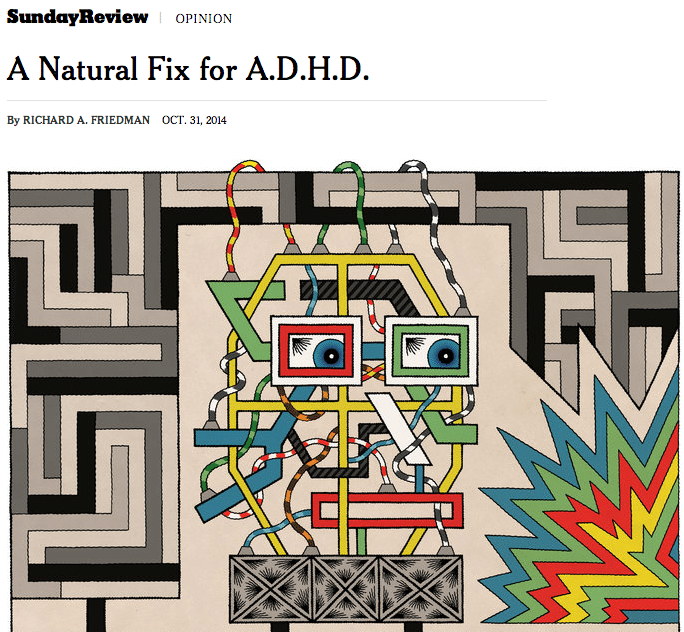“A Natural Fix for A.D.H.D.” – A Comment on The New York Times Article

A Natural Fix for A.D.H.D.
Article from The New York Times By RICHARD A. FRIEDMAN,ATTENTION deficit hyperactivity disorder is now the most prevalent psychiatric illness of young people in America, affecting 11 percent of them at some point between the ages of 4 and 17. The rates of both diagnosis and treatment have increased so much in the past decade that you may wonder whether something that affects so many people can really be a disease.
And for a good reason. Recent neuroscience research shows that people with A.D.H.D. are actually hard-wired for novelty-seeking — a trait that had, until relatively recently, a distinct evolutionary advantage. Compared with the rest of us, they have sluggish and underfed brain reward circuits, so much of everyday life feels routine and understimulating.
To compensate, they are drawn to new and exciting experiences and get famously impatient and restless with the regimented structure that characterizes our modern world. In short, people with A.D.H.D. may not have a disease, so much as a set of behavioral traits that don’t match the expectations of our contemporary culture.
From the standpoint of teachers, parents and the world at large, the problem with people with A.D.H.D. looks like a lack of focus and attention and impulsive behavior. But if you have the “illness,” the real problem is that, to your brain, the world that you live in essentially feels not very interesting.
Read full article from The New York Times here
COMMENT POSTED ON NEW YORK TIMES FROM FOUNDER OF NEUROFEEDBACK NY, NATALIE BAKER: “Professionally I see people of all ages with ADHD for neurofeedback training where the brain gets to “see” its choices (such as focusing single pointedly or scanning the environment, etc.) and self-correct based on what it “sees” in its functioning that is neither efficient nor effective response to present-moment needs. What I want to add to this discussion are two points. One, a healthy brain doesn’t fixate in any particular response patterning; it is naturally dynamic and changing constantly to relate with new stimulus. And two, the brain doesn’t always know that what it’s doing habitually is not getting the job done. We can look at the ADHD brain as fixating in particular patterning. Why? We’re not totally sure but what we see in neurofeedback training that if you give the brain a “mirror” to see that it’s fixating on say, hyper-vigilant surveying of the environment when the task at hand is a homework assignment (focusing single-pointedly), to some degree the brain will self correct and focus again. This observation is very interesting: it seems that every brain needs the opportunity to see it’s own habitual response patterns in order to optimize it’s own functioning–whatever the range of optimal functioning is for THAT brain.” – Natalie Baker, Neurofeedback NY Founder and Advanced Neurofeedback Trainer
Do you like Neurofeedback NY? Share your feedback with us.
Schedule your session, rent your device or just say hello!